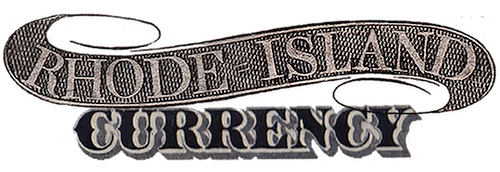Bank of Rhode Island, Newport
The Bank of Rhode Island was founded in Newport on October 28, 1795. It was the second bank incorporated in the state (following the Providence Bank of 1791). Its starting capital was $100,000.
The bank’s founder and first president was Christopher Champlin (1731-1805), a merchant who was involved with privateering, the slave trade and the West Indies trade. Champlin was also a member of the Continental Congress and the Rhode Island Legislature.
Moses Seixas, another founder of the bank, served as its first cashier. A search of Slavevoyages.org reveals that Seixas was listed among the owners of at least six slave trading voyages made between 1805 and 1807.
The institution was originally located in his home at 29 Touro Street. Seixas is well known as the warden of the Congregation Yeshuat Israel who penned a letter to newly-elected President George Washington. Washington’s reply, known as “The Letter to Touro Synagogue,” was an important affirmation of religious tolerance in the young nation.
George Champlin (a brother of Christopher who had also been involved in the slave trade) served as president of the bank from 1807 until his death in 1809.
While there is no doubt that the leadership of this institution had a dark connection to the trafficking of human souls, whether the bank’s finances were entangled in the slave trade is not yet known. Little was written about the business’s early days in Newport, but accounting records may reveal some clues. Clearly, additional research needs to be done on the subject.
The bank was later located at 219 Thames Street (see photo below). This structure was across the street from the Kinsey Building, which housed the Aquidneck Bank.
On August 21, 1865, the institution was reorganized as the National Bank of Rhode Island and granted federal charter #1532. According to the National Bank Note Census, it issued $876,400 in notes, ranging from $1 to $50. 18 examples are known to be in collectors’ hands today.
In May of 1900, the National Bank of Rhode Island was absorbed by the Industrial Trust Company to become the Newport branch of that institution. The news appears to have taken many in Newport by surprise. Later, this business would be combined with its former competitor, the First National Bank of Newport. under the Industrial Trust umbrella (along with Newport Trust and Coddington Savings Bank).
In 1902, the bank’s former edifice at 219 Thames Street was torn down to make way for the new Newport Trust building (which was itself demolished in 1972 when Americas Cup Avenue was widened).
* This bank is not to be confused with BankRI, a completely separate institution incorporated in 1995.

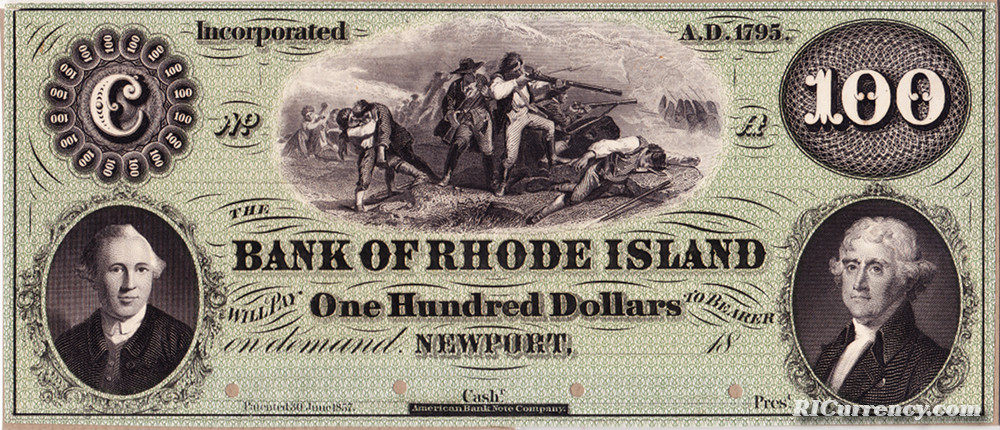


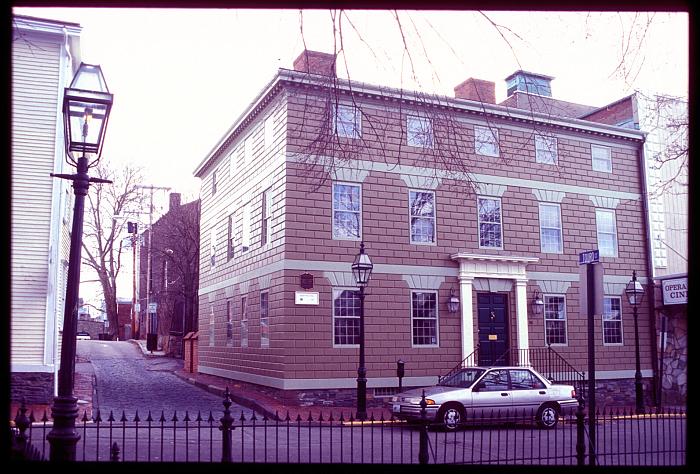
The Buliod-Perry-House, 29 Touro Street, Newport, the residence of Moses Seixas and the first home of the Bank of Rhode Island. It was later home to Oliver Hazard Perry. (Source: Wikipedia.)
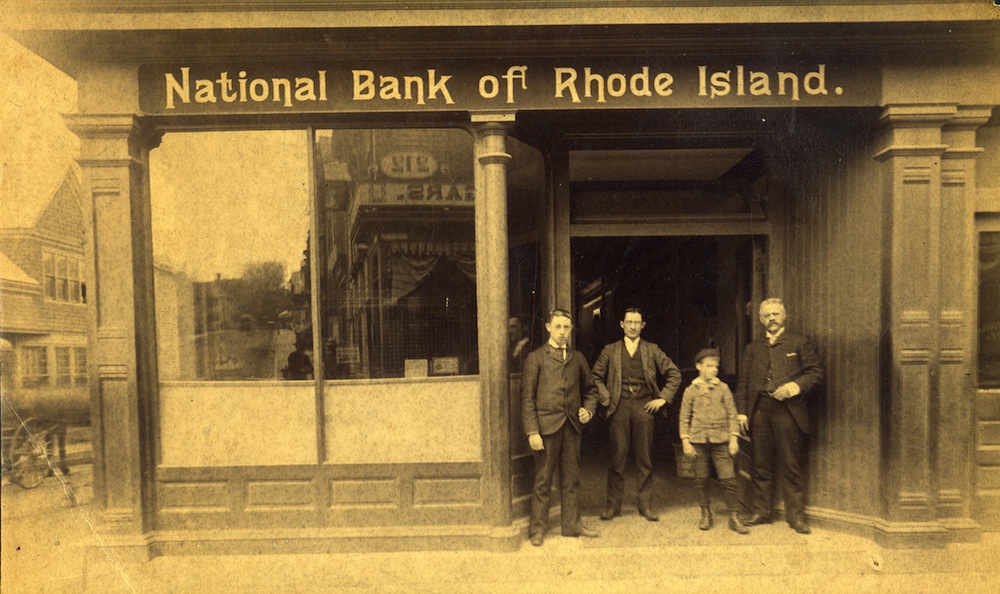
A sepia tone photograph of Arthur H. Popple, John Peckham, an unidentified boy, and Thomas Peckham standing ouside the National Bank of Rhode Island at 219 Thames Street. The building was demolished in 1902. © Newport Historical Society. Reprinted with permission.
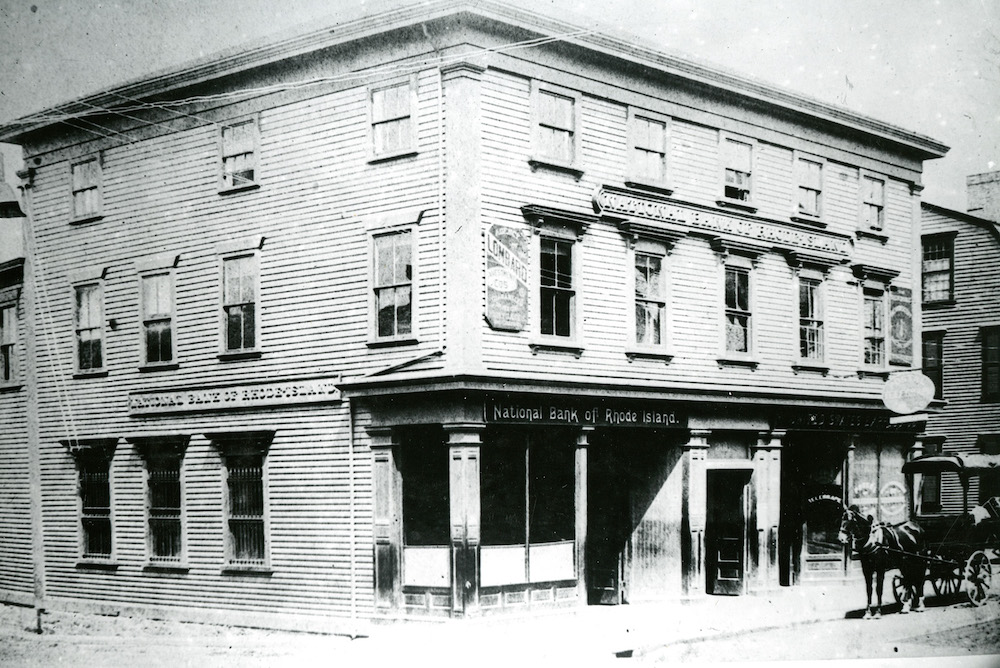
The corner of Commercial Wharf and Thames Street, showing the National Bank of Rhode Island.
“Commercial Wharf at Thames Street, Newport”, VM013_GF6282, Rhode Island Photograph Collection, Providence Public Library, Providence, RI. Reprinted with permission.
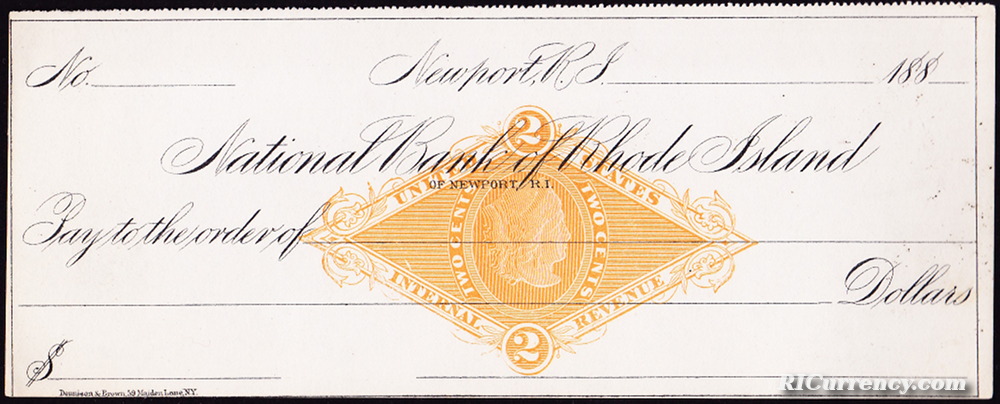
Blank bank check.
